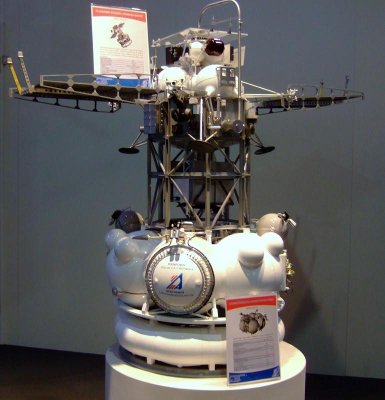
A Russian Defense Ministry spokesman announced that yesterday, when in Russia it was evening, the space probe Phobos-Grunt (model photo ©MKonair) has plunged into the Pacific Ocean off the coast of Chile. Initially, it seemed that it would fall into the Atlantic Ocean but in these situations is virtually impossible to make accurate predictions.
The Phobos-Grunt spacecraft was supposed to be a strong point in the new Russian space program but the result was a disaster. In fact it was designed to reach Mars satellite Phobos, collect a sample – its name literally means “Phobos ground” – and bring it back.
Phobos-Grunt carried the Chinese probe Yinghua-1, which was designed to study Mars from its orbit, and the Living Interplanetary Flight Experiment (LIFE or Phobos LIFE) module, which contained micro-organisms for a biological experiment that was designed to see if they could survive in deep space.
Phobos-Grunt was launched on November 9, 2011 from the Baikonur Cosmodrome and after entering orbit the engines were supposed to switch on to send it into its interplanetary trajectory but that didn’t happen. The spacecraft remained in orbit and attempts were made to contact it to diagnose the problem and see if it was passible to turn the engine on to make it go to Mars.
On November 22 an ESA station was able to make contact with Phobos-Grunt and the next day it received telemetry data from the probe. Unfortunately the information wasn’t sufficient for the Russians to be able to identify the problem and try to find a solution. In the following days new attempts were made to contact the probe and send the order to switch on the engines but without success.
[ad name=”Google Adsense 300″]
In December, Phobos-Grunt was considered lost and its orbit has slowly deteriorated until yesterday it fell down. In addition to the potential danger caused by pieces of a very big piece of machineri there was the risk that the hydrazine and nitrogen tetroxide it contained, for the most part fuel that it couldn’t use, might be dispersed in the air. they’re toxic but they should’ve been burned during its fall.
For Russia this is a serious failure and the accusations of sabotage seem an attempt to put the blame on someone else. The problem is also political so now we’ll have to see whether the Russians will agree to work in joint missions with ESA and NASA or will try to run new space missions on their own.


Permalink
Permalink